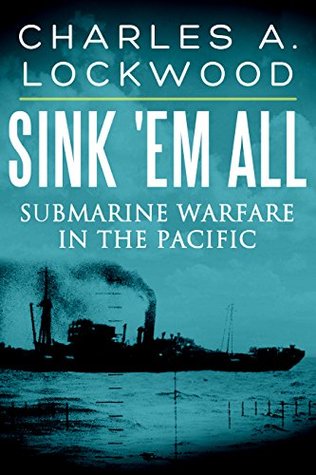More on this book
Kindle Notes & Highlights
Read between
August 18, 2018 - March 1, 2023
the American public is largely unaware of their great debt to that relatively small but closely knit force which had, at its peak, not more than 4,000 officers and 46,000 men, of which number some 16,000 actually manned the submarines.
There are few families in this country who were not touched by the war through the service of sons, daughters or near relatives, and there are still fewer servicemen and women who are not indebted to our submariners in some way or other. I have in mind particularly the 504 airmen of all the services who were rescued from almost certain death of drowning, or worse, by the timely presence of life-guard submarines.
The battered remnants of our once powerful Asiatic Fleet and Allied naval forces had retreated to Fremantle, on the west coast of Australia, to repair battle damage and replace casualties. Part of the Submarine Force, U.S. Asiatic Fleet, had been dispersed to this most southwestern port. Normally a prosperous wheat, wool and cattle shipping town, the harbor now was empty of merchantmen and only the submarine tender Holland, with a half dozen of her brood, represented the naval power of the United States.
The Trout, a Pearl Harbor-based submarine, early in the war had brought out 20 tons of gold, silver and securities — the Philippine currency reserve. The stories of heroism
Something had to be done about this — and soon. Those submariners needed complete rest, as much as we could give them, between patrols. They must go back fit, mentally and physically, to stand the strain of 50-day patrols in enemy-controlled waters where every man’s hand was against them, to sink the maximum number of Jap ships and to bring their own boats safely back to base to prepare for another patrol. There were plenty of material problems confronting us at Perth Headquarters, such as lack of spare parts and torpedoes, and correction of torpedo defects, but paramount to me was the problem
...more
submarines. The idea of rehabilitation was not new. The Germans initiated it in World War I, and no one ever accused them of pampering their men.
No outfit boasting such an array of talent, given half a chance, could fail to produce. There was not a “Yes” man among them. Each had very definite ideas as to how his particular ships should be employed and how the war was to be won. They were agreed on but one thing, that the war was to be won — and soon. This set-up suited me perfectly, for it insured that in any critical situation, the different angles from which it was certain to be attacked by my top advisors would result in a correct, perhaps brilliant, solution.
our experts clung to it “like grim death to a dead cat” for many months more.
Among the Spearfish’s other passengers were one Navy and 12 Army nurses. They had made the 15-day trip in the Chief Petty Officers’ tiny four-bunk quarters where they slept in watches and occupied their waking hours helping the mess cooks and making pies and cakes in the ship’s galley, to the great pleasure of all hands. All were apparently in good health and spirits.
Owing to the many gauge changes on the Australian railways, the freight service across the country was so slow that we found it quicker to ship our torpedoes by boat from Melbourne to Western Australia.
One midget had apparently tried in vain to open the caps which covered the outboard ends of her torpedo tubes. Failing in this she had settled to bottom in a quiet cove and the captain and his mechanic shot themselves. Another had become entangled in an antisubmarine net and, evidently becoming discouraged, the skipper had blown the boat up with his demolition charge.
conditioning in their undersea boats. The first such installation that we U.S. submariners saw was in the Dutch K-13, which passed through Panama about 1929. We were enthusiastic about the idea but it was not until 1934 that an installation was made in U.S. submarines. This new equipment was strongly objected to by many as being “hotel accommodations” but it certainly pulled its weight in the boat in terms of health and endurance of submarine crews operating in torrid waters. The Dutch have always had smart submarines. It was they who invented the device which we call a “poppet valve” for
...more


